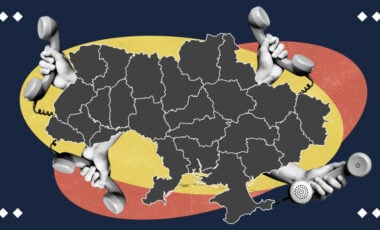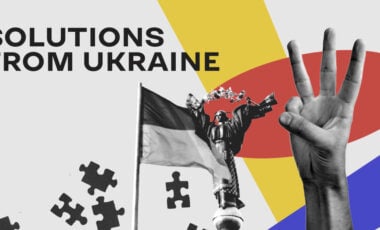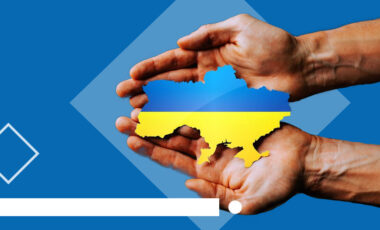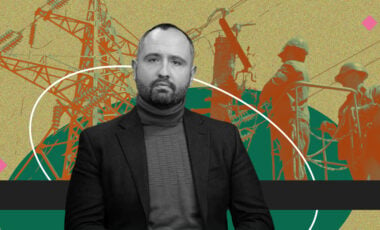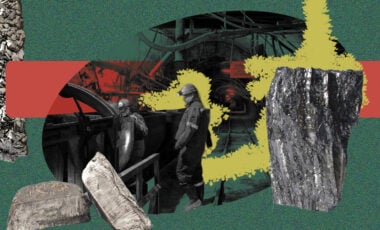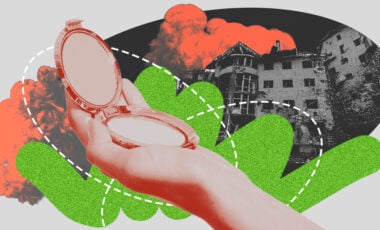Why and How the Public Should Monitor Public Procurement in 2025

As government agencies fail to ensure full oversight of the field, the public takes the initiative to monitor procurements on Prozorro. The DOZORRO team, with over eight years of experience, shares tips on monitoring procurements efficiently and objectively.
The public's demand for the efficient use of budget funds has grown during the full-scale war — and understandably so. When families save a significant portion of their monthly budget to support the Armed Forces of Ukraine, it is painful to read about wasteful spending, such as unnecessary paving projects or excessive overspending. This is a completely reasonable demand: that our taxes support the army and other truly essential expenses while being spent prudently. Unfortunately, this is not always the case.
For years, we have emphasized that state oversight of public procurement is not sufficiently effective. While we work on improving it, we are also actively engaged in public monitoring. Over the eight years of the project, our team and the DOZORRO community have reviewed more than 40,000 procurements. For comparison, during the same period, the State Audit Service — the main body responsible for overseeing public procurement — monitored approximately 63,000. In other words, public oversight plays a significant role in ensuring that budget procurements are efficient and fair.
Just like state control, public oversight is effective only when it is professional, consistent, and objective. The DOZORRO project explains how to monitor procurements in a way that truly influences effective budget spending.
Ensure that the problem lies within the procurement process
This is step zero. Some communities are spending significant amounts of money on things that could have waited until after victory — such as building stadiums and parks, major road repairs, paving stones, and purchasing expensive cars. We see all these procurements on Prozorro. However, the issue isn't with the procurements themselves, as they can be conducted in accordance with the rules and even with savings. The real questions arise around budgeting and the necessity of spending.
Procurements announced on Prozorro are not the result of a procuring entity's own initiative, but rather the outcome of the organization's and community's planning and cost prioritization.
When public scrutiny helps cancel a procurement because it is clearly unnecessary at the time, it's a great result. However, this isn't exactly about checking procurements — it's about controlling the distribution of the community's budget. And, by the way, this is something that can and should be influenced at the planning stage.
Choose the focus of your control
We started by emphasizing that oversight can only be effective when it is professional. Public procurement is a vast field, so to make your efforts more impactful, it's better to focus on narrower areas where you either have expertise or want to develop it.
For example, in 2024, we at DOZORRO focused on construction tenders, which accounted for 19% of the total value of contracts awarded in Prozorro last year. You can choose the scope of monitoring based on trends in the field and the country as a whole, or according to your area of expertise. For example, in the coming years, significant spending will undoubtedly be directed towards defense procurements and reconstruction. However, if you have a specialized medical or pharmaceutical background, it may be more practical to focus on medical procurements.
Frankly speaking, back in early 2024, construction was a new area for us. Therefore, alongside monitoring procurements and analyzing estimates, we studied building codes and legislation, gained an understanding of construction processes and pricing, and examined design and estimate documentation, as well as the project expertise review process.
Overall, for effective public monitoring, it's important to consistently build and enhance your expertise — meaning, prioritize your learning and growth.
Develop your own methodology
For your monitoring to be effective, it must be consistent. To work effectively, you should develop and follow clear approaches and principles in your work. At DOZORRO, we have an internal monitoring methodology: what we do for what, how we compare prices with market prices, who we contact and when. This, in particular, allows us to remain unbiased and achieve a systematic result. Clear rules help maintain a high level of monitoring quality within the team.
For example, in 2024, we monitored over 1,300 tenders with an expected value of more than UAH 25 billion. Violations were found in one out of every three procurements we checked. The most typical of them were:
- overpricing (overpayments);
- violation during the evaluation of tender proposals (unjustified rejection or selection of the winner);
- violations in the tender documentation and discriminatory requirements.
By the way, we identified potential overpayments in every second construction procurement we analyzed. Overall, we were able to prevent inefficient spending of approximately UAH 2 billion from the budget over the course of the year.
Ask procuring entities
A common misconception is that all procurement violations are deliberate actions. In our experience, a significant portion of them is actually due to mistakes, many of which are unintentional. Therefore, often the best course of action when you notice a violation is to inform the procuring entity. After all, regardless of the violation's nature, the procuring entity is best positioned to correct it.
For example, in November, the National Commission for State Regulation of Energy and Public Utilities procured office paper at a price more than 40% higher than the market value. After our inquiry, the contract was terminated. The procuring entity conducted a new procurement through Prozorro Market with an adjusted expected value. Our team helped save UAH 585,000 on that procurement. And we didn't need to involve auditors or law enforcement officers.
Also, procuring entities may give you information unavailable on Prozorro. Therefore, make it a habit to always contact the procuring entity first, and only then consider other methods of influence.
Analyze carefully
This may seem like obvious advice, but when we engage in monitoring, we must understand the consequences of our actions. Being a professional buyer is very difficult and not generously paid job. At the same time, our job is essentially to highlight potential issues for them. Of course, this is not a reason to avoid monitoring procurements. But there is certainly a reason to ensure that these additional issues are well-founded. As a result of our appeals, 34 criminal proceedings were initiated in 2024. These are cases where procuring entities refused to correct violations on their own, and the overpayments were significant and verified multiple times.
It's always better to double-check prices from multiple sources, consult with experts in the procurement field you're analyzing, and ask additional questions directly to the procuring entity. Only when you're 100% confident in your calculations and hypotheses should you contact auditors and law enforcement or share the information with the media. After all, our goal in analyzing procurements is not to create hype, but to prevent violations, especially overpayments.
Master the tools
The right tools can enhance your analysis. Prozorro alone is often not enough. Sometimes, you need to gather data on specific parameters and analyze the relationships between participants. There are many tools available for this purpose, including those created by the public.
One of the most powerful tools for in-depth procurement analysis is the public analytics module, BI Prozorro, managed by the DOZORRO team. It provides data on all procurements made through the Prozorro system since 2015, presented in user-friendly tables, analytical graphs, and charts. It is widely used by auditors, the Ministry of Economy, and the Prozorro team itself. Last year, our team launched another tool — the Procuring Entity Index. By using various groups of indicators, it allows for a comprehensive assessment of the procurement quality of individual entities and facilitates comparisons between them.
We also recommend paying attention to the Clarity Project — a simpler, though less powerful, procurement analysis tool. Also, Opendatabot and YouControl are valuable tools for investigating participants, particularly to uncover potential connections.
Suggest ways to improve the rules
When looking for violations, it's important to step back and view the broader context. Some problems may be systemic, and therefore, cannot be addressed through spot monitoring alone — they require systemic solutions.
For example, we investigated how competition in construction tenders is influenced by the deadline for submitting proposals and the format of the estimated documentation. Based on our research into construction tenders, the Ministry of Economy extended the deadline for submitting proposals to 14 days and recommended that procuring entities publish full design and estimate documentation, as well as investor estimates, in machine-readable format within the tender documentation.
We in the team joke that we're working towards retiring with a clear conscience someday. After all, public monitoring is essential until the state can fully ensure control over the sector. Therefore, we simultaneously analyze tenders and work to improve both the procurement process as a whole and the monitoring mechanisms.
___________
This material is funded by the European Union. Its content is the sole responsibility of Transparency International Ukraine and does












